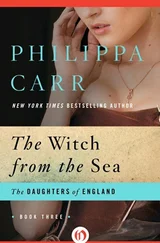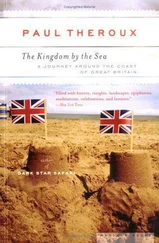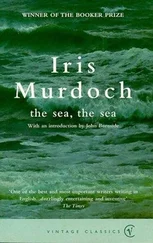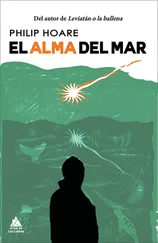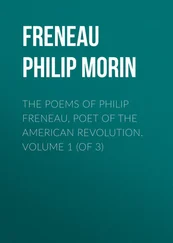1 ...6 7 8 10 11 12 ...15 I unzipped my backpack, slipped the gull inside, and zipped it back up.
I couldn’t take it home. The ride would take too long, and I feared for the bird’s well-being in my bag. I cycled to the nearby country park. As I rode down the village street, I could feel the gull moving about on my back. Every now and again, it would let out a feeble squawk. Concerned it might suffocate in its nylon pouch, I stopped to unzip the bag a little, half wondering, half hoping that it might have passed away. But the faint scrabbling movements told me it hadn’t given up yet.
At the park office, there was little to be done. No one was interested in the bird’s plight. Someone said I was ‘too soft’ and that gulls were ‘ten-a-penny’; a rarer animal might be worth saving, not this beach rat.
I wanted to hold up its head and show them its beautiful beak, as if it might sing its own defence. But the bird just lay there, helplessly. We were each as useless as each other. I rang the rspca, and was told to take it to a vet, but the journey there would just mean more stress, for us both, only delaying the inevitable. My friend, a park ranger, was working in the nearby yard.
I unzipped the bag for the last time. Richard reached in, tenderly gathering up the bird in his big brown hands as its life passed from my hands to his. ‘It’s been shot by an air gun,’ he said quietly, then took it around the corner to wring its neck.
As I rode home, it seemed every gull on the beach turned its back to me, resolutely looking away. I imagined their reprimands as I passed, muttering ‘Murderer’; they too were once persecuted and eaten, and their eggs gathered in their thousands. When I unzipped my bag again, back on the shore, I found a slick of slimy guano, and the stain of brown blood on my shorts. A single piece of down lay at the bottom. The wind whisked it out of my bag and into the waves.
I pushed out, among rafts of floating green weed, watching the ferries pass each other way off shore. In the mid-distance, a frenzy of gulls fought over an agreed, invisible point, feeding greedily on what lay below.
After a storm, when the waves roll in as if exhausted, the sea spits out strange things: huge lengths of wood which could be railway sleepers or bulwarks from ancient ships; cupboard doors and plastic seats; snaking bristles of indeterminate origin; entangled ropes covered with weed. Sometimes the scene resembles the aftermath of a battle: the unaccountable head and neck of a herring gull, floppy like a glove puppet. Bright shop-bought flowers, commemorating some unknown loss. An empty box which once contained human ashes. Above the wrack line, the charred remains of a bonfire smoulder, ringed with empty lager cans.
As a boy, I used to think what a terrible punishment it would be to have to count every pebble on the shore. Or what it would be like to lose something precious there and never be able to find it. Now, every day, I look for a stone with a hole in it. I align it to a particular point as a viewfinder; the light bursts through like a little sun, the world seen through a prehistoric telescope. They’re powerful talismans, these holy or hag stones. Back home they tumble out of my pockets and over shelves and window-sills as calendars of my days; my grandmother, who lived on the edge of the New Forest, kept one in her glass cabinet, next to the rows of china spaniels.
In another glass case, in the Pitt-Rivers Museum in Oxford, there are similar stones collected from other beaches, each with a handwritten label. William Twizel, a Victorian fisherman of Newbiggin-by-the-Sea, Northumberland, arranged them around the doors of his house, an echo of his inheritance and of a people whose blue eyes were said to be the colour of the sea in front of their cottages. Next to William’s stone is another example collected from Augustus Pitt-Rivers’ Wiltshire estate, where it was fixed to the beam of a cottage to keep witches away.
Lieutenant-General Augustus Henry Lane Fox Pitt-Rivers – whose full name sounds more like a geographic location – was a Crimean veteran, a Darwinist, and a pioneer of British archaeology. He ordered his collections according to type and use, rather than date and provenance. Now they lie crammed in table-top and wall-cases, with fossils and fans, fetishes and tribal masks all jumbled together in a dark galleried hall resembling a particularly gloomy department store.
Some stones come from Craig and Ballymena in Northern Ireland or Carnac in Brittany, and were used to protect cows, tied to their tethering stake or between their horns to prevent pixies stealing their milk. Horses, too, were hung with hag stones to stop witches riding them during the night, and on Dartmoor stones were worn around human necks or nailed to bed-posts to defend against nocturnal demons. The seventeenth-century Brahan Seer of the Scottish Highlands was said to have had such a stone through which he could see into the other world, although he was burned in a spiked barrel of tar on the beach at Chanonry Point for his trouble.
In a 1906 essay on ‘Witched Fishing Boats in Dorset’, Dr Henry Colley March observed that Dorset fishermen would tie holy stones to the bows and thread their start-ropes through them; it was also the custom in the same county to attach the key of a house to a holed beach-stone for luck, he noted. The learned Dr March went on – in the antiquarian tradition of his peers such as Pitt-Rivers, M.R. James and James Frazer – to discern an association with the megaliths of ritual land-scapes in southern England, Orkney and Brittany; half-natural, half-constructed objects charged with the power of the past. ‘It is impossible not to see a like motive for the ancient practice of dragging a sick or epileptic child through a hole in a large “druidical” stone.’ They might as well be threaded with sacrifices to unknown gods, although to my eyes they resemble little modernist sculptures.
But you can’t keep a beach in your house, despite the teetering piles on my shelves, a terminal moraine of memory, accumulating dust composed of the decomposing me. Deformed oyster shells grown around odd pebbles, smooth grey wooden shapes with knots for eyes, sand-blasted shards of Victorian glass, chunks of marmalade pots, soft stems of clay pipes once sucked between moustached lips and discarded like cigarette butts, and bits of blue willow-pattern plates awaiting ceramic resurrection; all of them tumbled together by the tides. As a boy I listened to the rushing noise inside shells; the same sound has been in my ears for years now, a perpetual ocean in my head.
In Iris Murdoch’s strange novel The Sea, The Sea , published in 1978, the celebrated actor Charles Arrowby retreats from London to write his memoirs. He lives alone in a ramshackle house on an unidentified English coast, having come to the sea in search of ‘monastic mysticism’. The events that follow – a series of impossible coincidences and fantastical happenings played out in a Shakespearean manner, with Arrowby as a kind of Prospero – take place over one summer. They occur in an indefinably apocalyptic time and place, as if society were on the verge of disintegration – as indeed it seemed to be at the time – although ostensibly all is normal in the world beyond Arrowby’s coastal retreat.
As he relishes his solitude and the splendour of its setting – swimming off the rocky shore, ordered by its tides or the way he gets in and out of the water via a rope – Arrowby’s idyll is broken one morning by what he imagines or perhaps actually sees: a maned and toothed leviathan. ‘ I saw a monster rising from the waves, ’ twenty or thirty feet high, coiled and spiny, its head crested and with sharp teeth and a pink mouth. ‘ I could see the sky through the coils .’ Although Arrowby puts this terrifying vision down to an acid flashback, a legacy of his misspent youth, the beast is an omen of all that happens afterwards as his former lovers and enemies come back to haunt him. Nor was it coincidence that this unsettling apparition is an echo of a scene in Racine’s Phaedra in which a sea monster appears, so fearsome that it infects the air and causes Hippolytus’ horses to drag their master to his watery doom.
Читать дальше


